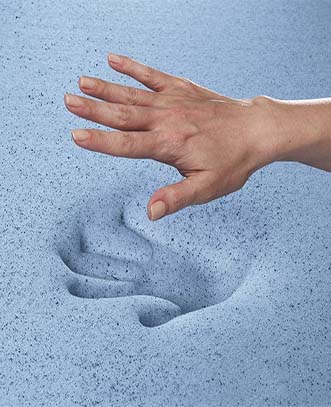We all know that some of us like to sleep late, while others like to get up early. And we know that this is more than just habit or preference; it seems to have something to do with our innermost identity, like preferring crowds over solitude or vice versa. We might even consider it an idle question, except for one thing: nothing about sleep is trivial, because most of us don’t get enough of it. The more we can learn, the better.
So with that in mind, what makes an owl an owl, and a lark a lark?
Until recently, scientists didn’t have any better answer than the average person. In part, this is because sleep science itself is a relatively recent development. But it’s also because the natural rhythms of human sleep are easily hidden or even distorted by the impacts of culture and technology—the most pernicious of these being the modern invention of the electric light.
The Discovery of the Biological Clock
By the 1950s, scientists had discovered that sleep was an active process, featuring its own characteristic brain waves, a drop in body temperature, and other changes. Yet as recently as 1963, the pioneering sleep researcher Nathaniel Kleitman still believed that the sleep-wake cycle was a conditioned response, driven only by families and cultures preferring not to be active at night.
However, at this point science had begun developing the idea of circadian rhythms—that is, the notion that even creatures as simple as algae seemed to know what time of day it was, based on some internal mechanism that functioned like a clock.
And sleep researchers had begun doing some rather odd experiments: for example, studying what happened to the sleep-wake cycle when men were kept for weeks at a time in specially designed underground buildings, or in caves. Absolute darkness could be maintained as long as necessary, and alarm clocks and watches could be made unavailable, along with sleep-altering substances such as alcohol. So what would happen to the 24-hour day? Would it just disappear?
It turned out it didn’t. Like algae, the people in these experiments still somehow “knew” what time it was. Even without clocks, electric lights, and sunlight, it seems, we stick quite close to a 24-hour day in waking and sleeping. The length of this built-in day varies in each of us, but the average is 24 hours, 11 minutes, according to research at the Sleep Medicine Division of Harvard University.
And this was just the start. Even more recent research has revealed that the clock does not work alone: instead, it interacts with another system that functions like an “appetite” for sleep. This other system is sometimes called “the sleep drive,” to make clear how similar it is to other appetites or drives, such as hunger.
The drive versus the clock: you say stop, I say go
In simple terms, the clock consists of two groups of cells deep inside our brain, in a region known as the suprachiasmatic nucleus, or SCN. Half the clock maintains its own rhythm, based on how long it takes its cells to produce proteins based on their genes, a process called genetic expression. These genes mutate slightly from one generation to the next, which is why we all have clocks of slightly different lengths—some longer, some shorter.
But that’s only half the SCN clock. The other half is connected via a special nerve pathway to our eyes. When light strikes certain cells in our retinas, it sends a signal to this half of the clock, resetting the clock as a whole to keep it in tune with the outside world. The resetting process is gradual, but in the old days, this wasn’t a problem. Our ancestors didn’t suffer from jet lag because they didn’t have jets—their SCN clocks kept up easily with the only natural influence on length of day, the changing seasons.
The clock plays a role in both inducing sleep at night, and maintaining alertness during the day. Around bedtime, it helps conk us out by telling the hypothalamus, a gland in the brain, to start secreting melatonin, a hormone that helps make us sleepy by lowering body temperature. (Which is why melatonin has become popular as a sleep supplement for jet lag and insomnia.) At other times, it helps us stay alert by sending signals to a portion of the brain stem known as the reticular activating system.
When the clock is working to keep us alert, it’s actually opposing the second system involved—the sleep drive, which we can think of as our appetite for sleep. Sleep drive is complicated, involving the ebb and flow of various chemicals. As just one example, a chemical called adenosine accumulates in the brain throughout the time we’re awake, starting from the moment we get up in the morning. The more adenosine, the sleepier we feel, until near the end of the day we have to crash. Overnight the adenosine is swept away and we start the next morning ready to do the same trick all over again.
Here’s a neat sleep fact: Caffeine molecules plug into the exact same receptors as adenosine. The receptors aren’t able to tell the brain that it should be getting sleepy—so the brain instead gets excited and tells other body systems to get excited too.
The sleep clock and the sleep drive are so complex that we’re just beginning to learn how they really work. But we do know that in seeming to oppose each other—the clock pushing for alertness, the drive bidding for sleepiness—they’re really working together to create our natural active pattern of waking and sleeping.
Of course, sometimes that natural pattern goes awry, and we sleep badly. Here’s where sleep science comes to the rescue: because of what we’ve learned about the sleep-wake cycle, we can do a better job of restoring it, thanks to unusual new treatments such as bright light therapy at certain times of day. Find out more in our next chapter, The Rhythms of Sleep, Part 2: Getting Back in Sync.







